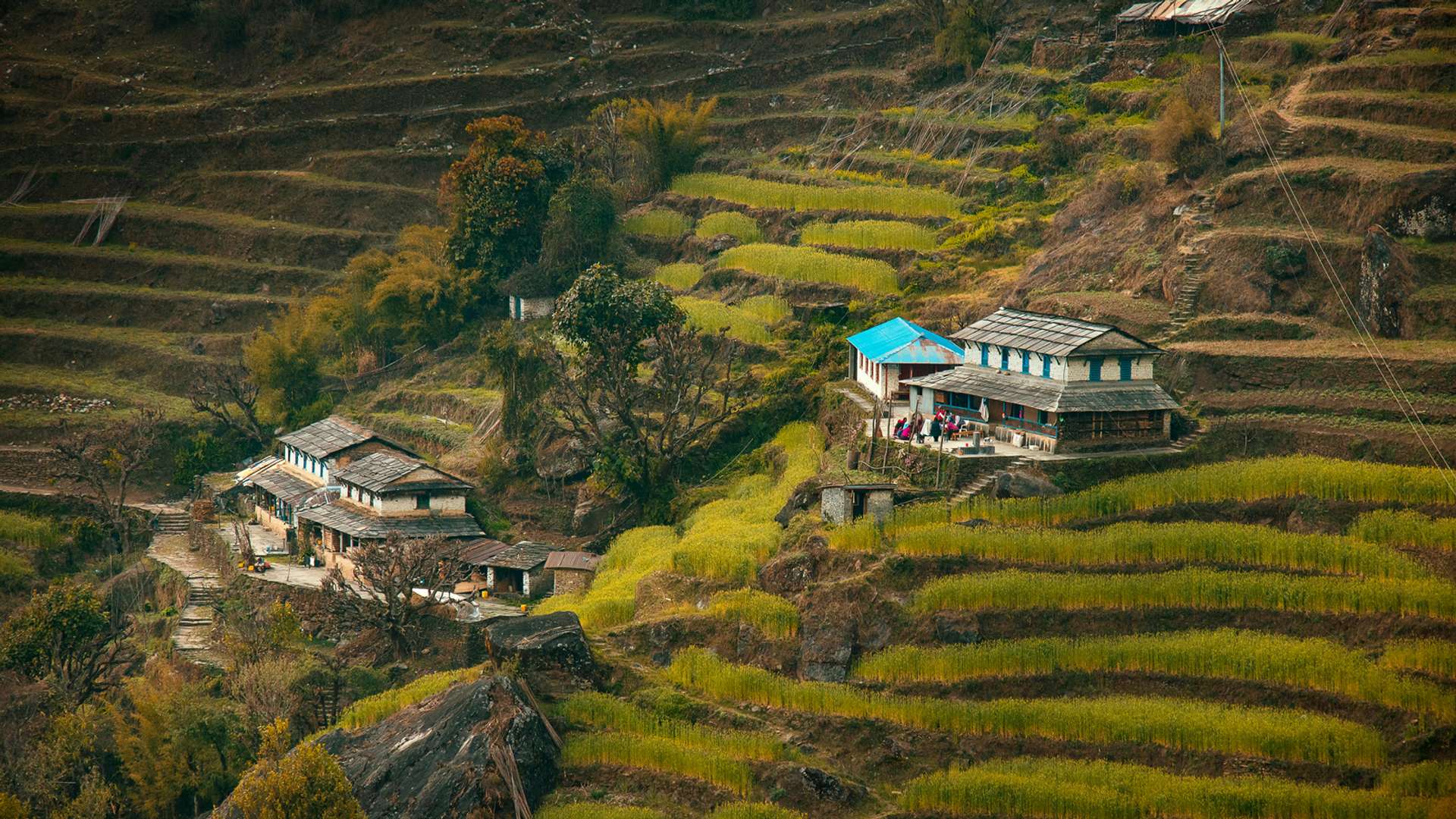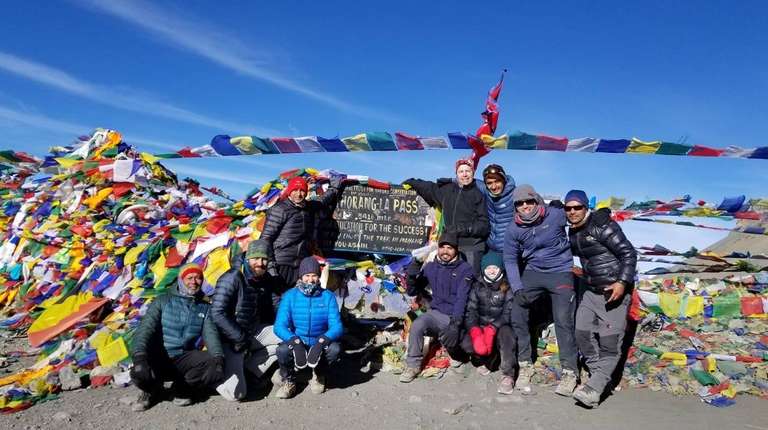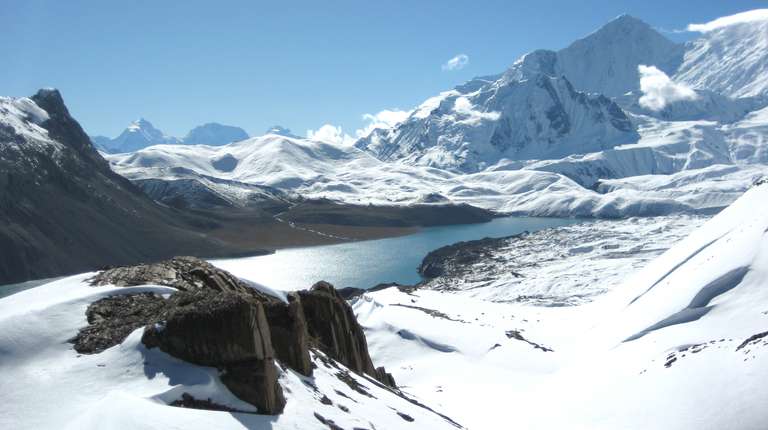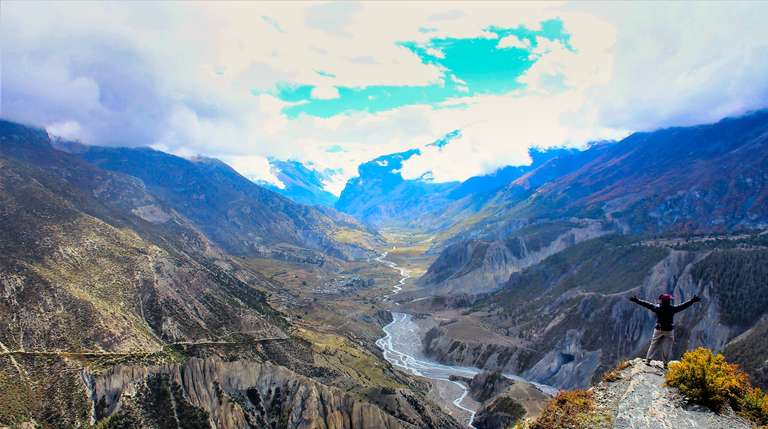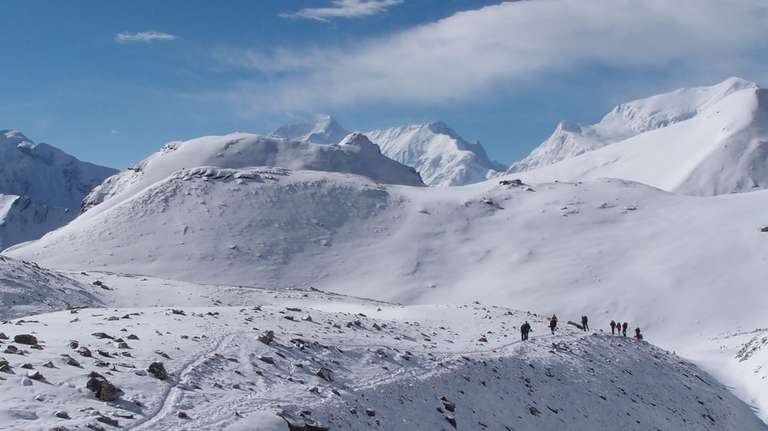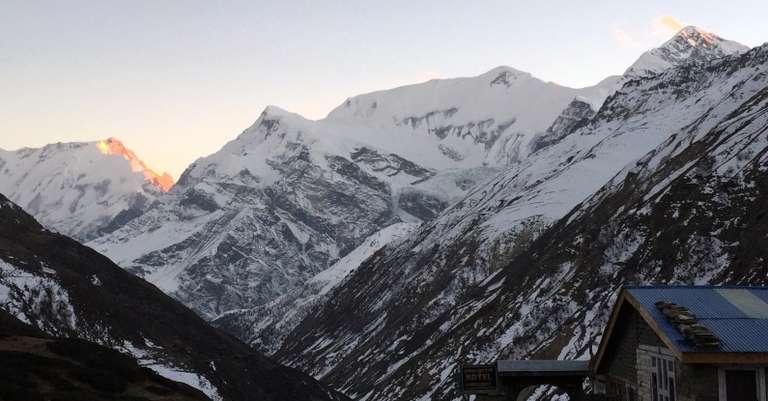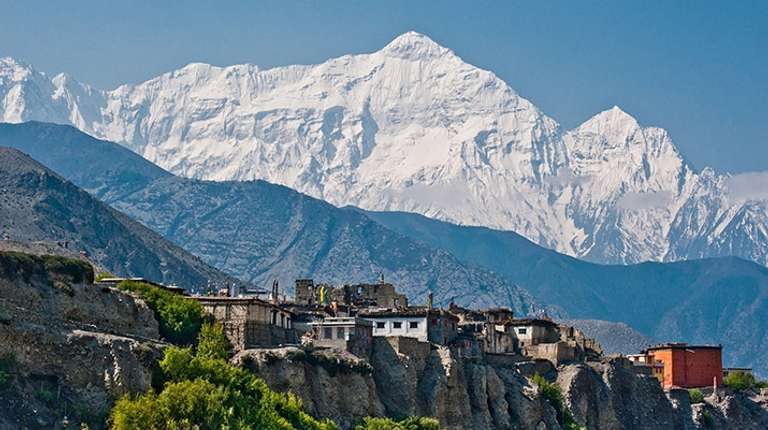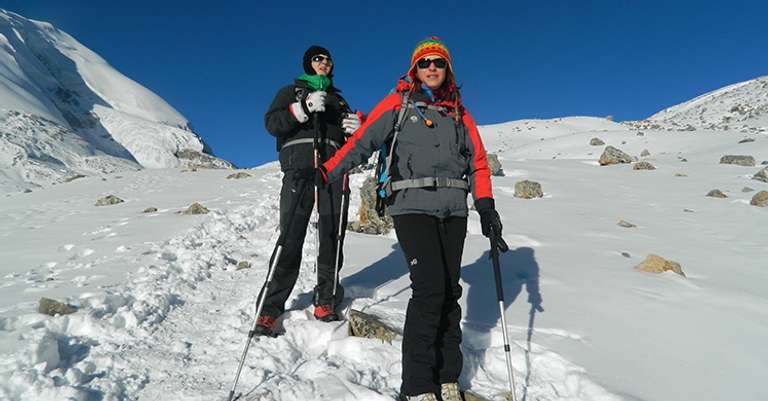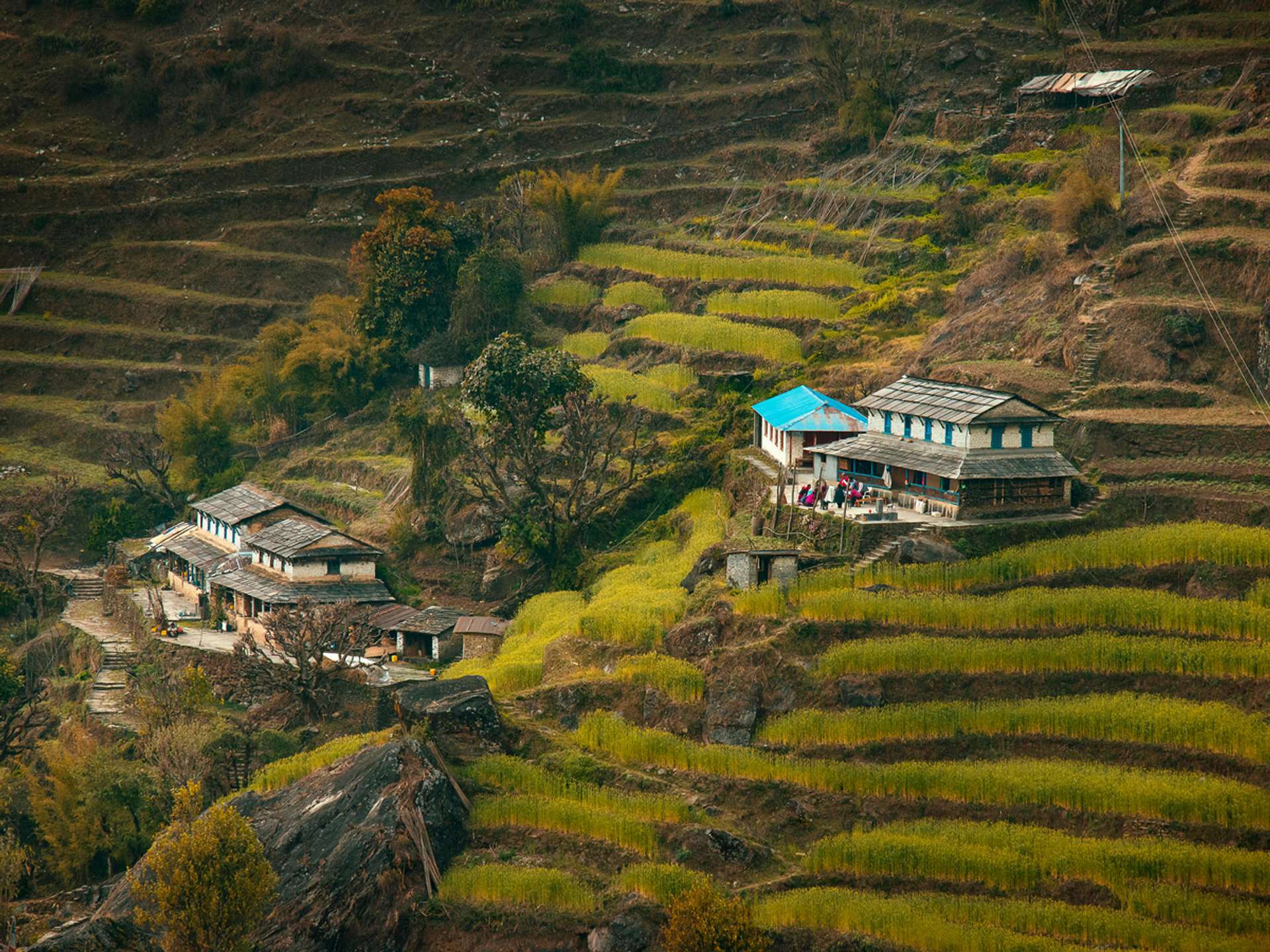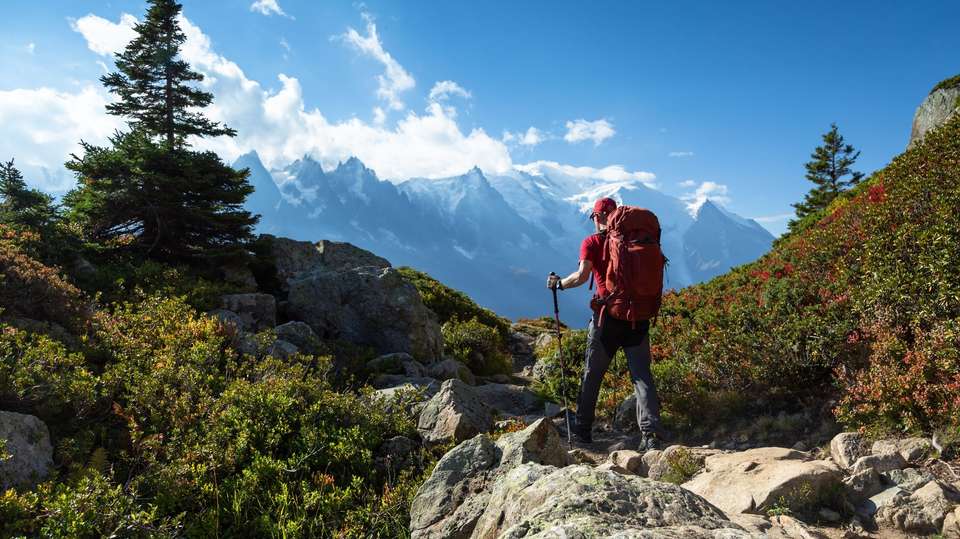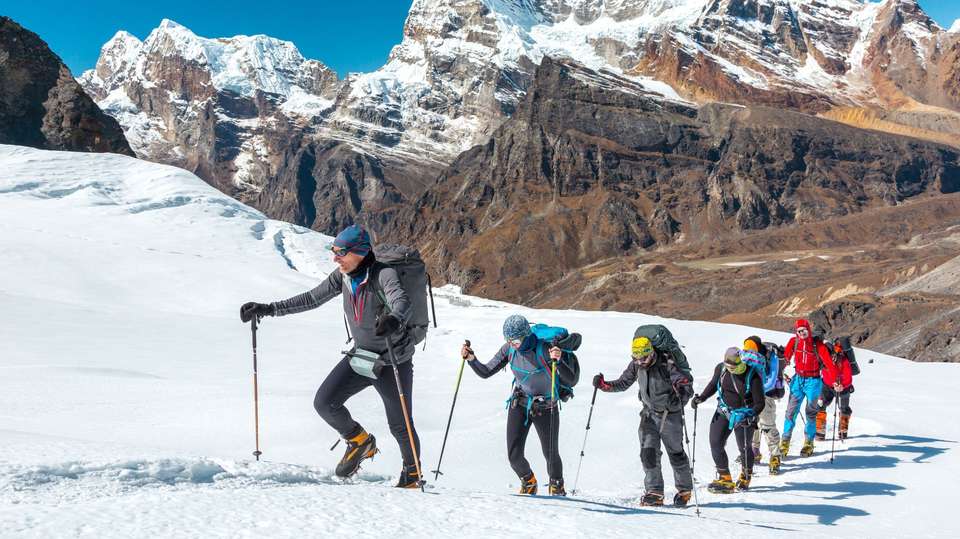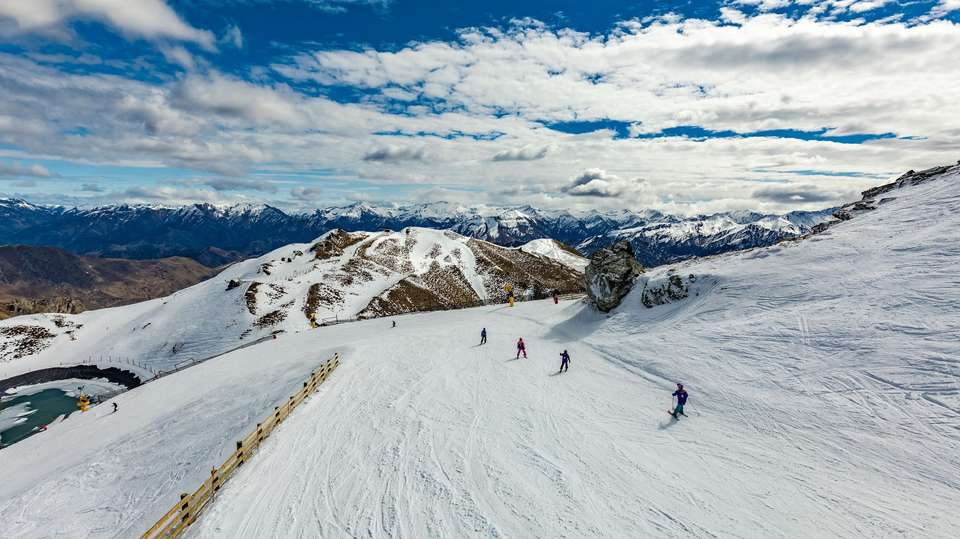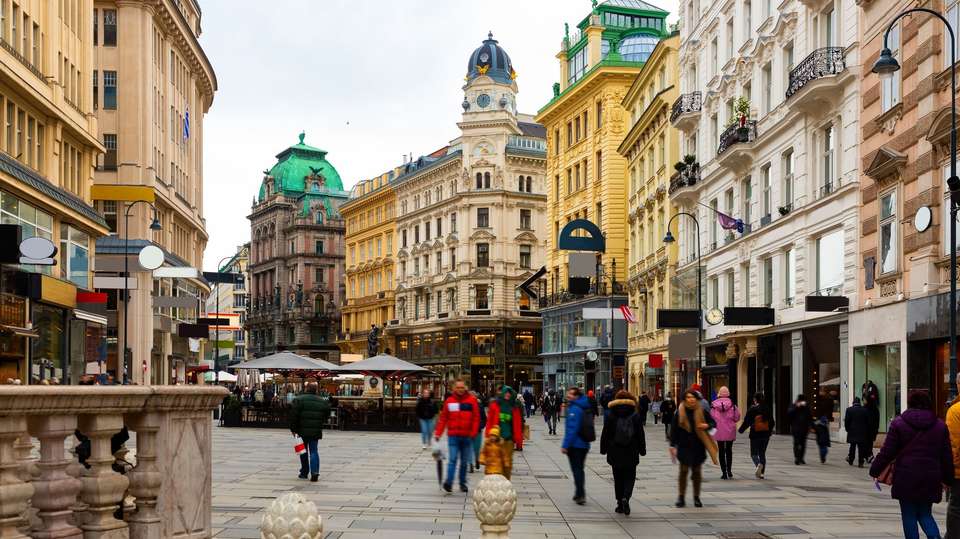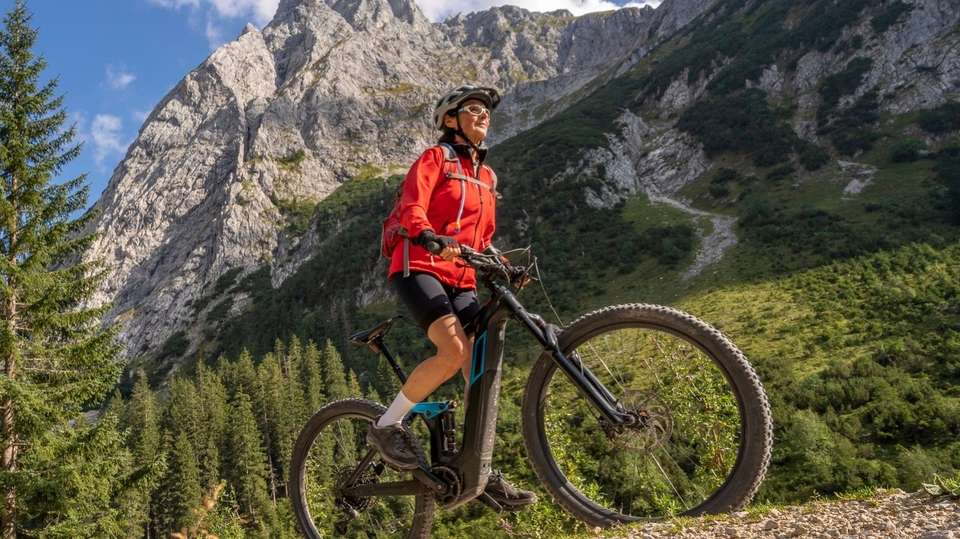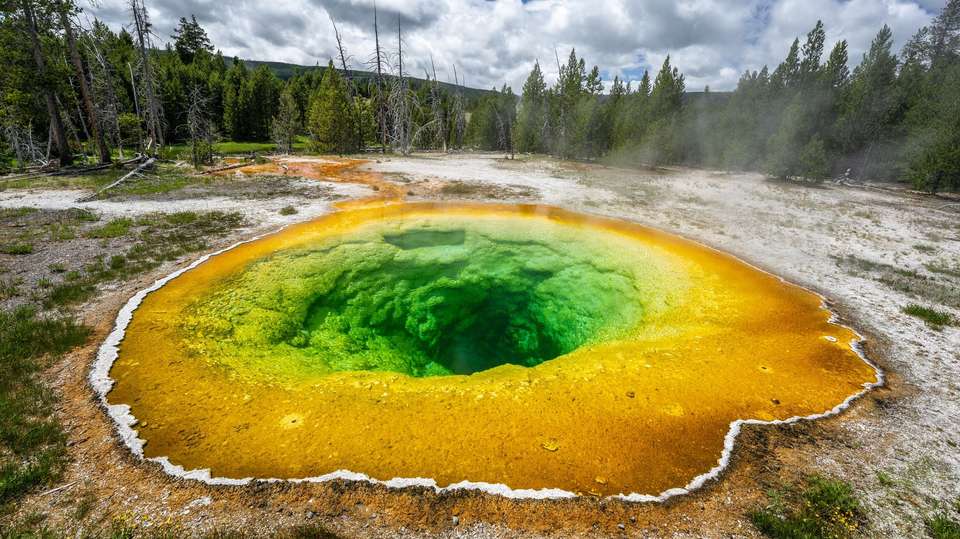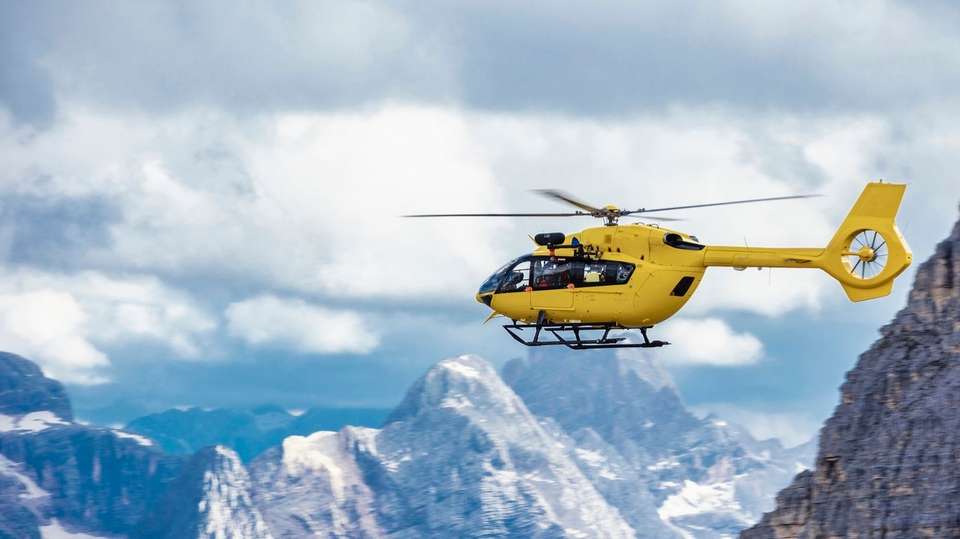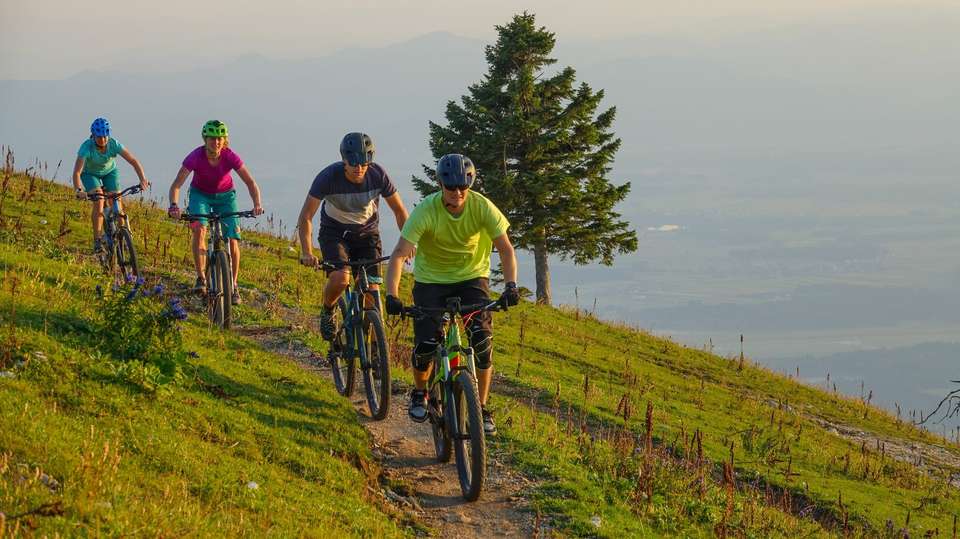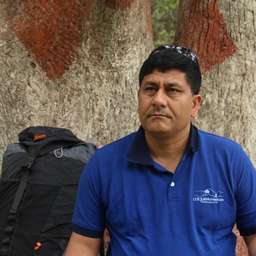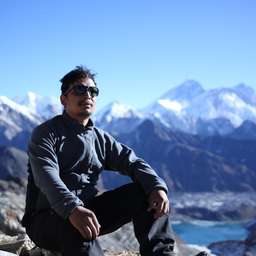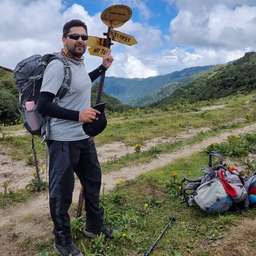Annapurna Circuit Trek - Overview
The entire Annapurna Circuit lies within the 7,629 square kilometers of Annapurna Conservation Area, Nepal’s first and largest conservation area. The classic trek route is approximately 160 kilometers, starting from Besisahar in the Marshyangdi river valley and ending at Jomsom in the Kali Gandaki river valley. The route follows forests, paddy fields, waterfalls, massive cliffs, and small villages, passing through Manang, a Tibetan village with powerful Buddhist traditions. Weather permitting, views en route include 13 peaks above 7,000 meters, the world's 10th highest peak — Annapurna I at 8,091 meters. Along the way, trekkers will also see glaciers, experience the extreme Annapurna elevation, visit Kagbeni village — famous for its Hindu pilgrimage — and meet Gurung people, native to the Annapurna region. After a long trek, the natural hot springs in Tatopani await to soothe tired muscles.
Alternative Treks in the Annapurna Region
There are other trekking options available in the Annapurna region:
- The Annapurna Base Camp trek takes you to Annapurna Base Camp instead of the Annapurna Range. The Annapurna Base Camp trek can be completed in 9 days, less than the trek to Annapurna Circuit.
- If you only have 8 days available, the Annapurna Panorama trek might be a good option for you. The trail leads trekkers through lush rhododendron forests, picturesque villages, and terraced farmlands, offering glimpses of the majestic Annapurna and Dhaulagiri mountain ranges.
- The Poon Hill Trek is a short and enchanting journey in the Annapurna region of Nepal. The trek is around 3 to 5 days and the ultimate highlight is reaching Poon Hill's summit at dawn.
Trek Facts
| Trek difficulty | Moderate to hard |
| Trekking experience | Somewhat experienced |
| Number of days | 12/15 |
| Number of days | Not recommended due to the high altitudes and number of days. |
| Popularity | Very popular and has well-established tea houses, lodges, and facilities along the trail. |
| Max altitude | 5,416 m, Thorong La pass |
| Accommodation | Basic cheap teahouses / Lodges / Higher-end guesthouses |
| Best season | Mar–May, Oct–Nov |
| Transport to/from trek | Bus from Kathmandu or Pokhara to Chame or Manang. |
| Permits required | Trekkers' Information Management System (TIMS) Card Annapurna Conservation Area Project (ACAP) Entry Permit Restrictive permits are NOT required for this trek |
Annapurna Circuit Trek Itinerary
The following is a standard sample itinerary for the Annapurna Circuit Trek. This may vary depending on your preferences and your trekking agency:
| Day 1 | Arrival in Kathmandu |
| Day 2 | Bus from Kathmandu or Pokhara to Besisahar and hike to Bhulbhule (840 m) |
| Day 3 | Trek to Chamje (1,430 m) 7 hours |
| Day 4 | Trek to Bagarchhap (2,150 m) 6 hours |
| Day 5 | Trek to Chame (2,670 m) 6 hours |
| Day 6 | Trek to Lower Pisang (3,300 m) 5 hours |
| Day 7 | Trek to Manang (3,540 m) 5 hours |
| Day 8 | Acclimatization day at Manang. Day trip to surrounding areas. |
| Day 9 | Trek to Yak Kharkha (4,020 m) 4 hours |
| Day 10 | Trek to High Camp (4,800 m) 5 hours |
| Day 11 | Trek to Muktinath (3,800 m) via Thorong La Pass (5,416 m) 8 hours |
| Day 12 | Trek to Jomsom (2,700 m) 6 hours |
| Day 13 | Fly to Pokhara 20 minutes |
| Day 14 | Take a bus from Pokhara to Kathmandu, 8 hours or take a 30 minutes flight |
| Day 15 | Departure from Kathmandu |
Annapurna Circuit Trek Highlights
- Before or after your trek, take time to visit the popular lakeside town of Pokhara. Pokhara’s best sights include Shree Bindhyabasini Temple and the International Mountain Museum. There is also a hub of restaurants, coffee shops, resorts, and more.
- Enjoy the tea house experience. Annapurna is famous for traditional tea house accommodations along the route, which are simple mountain lodges with buckets of local Gurung hospitality.
- Soar above 5000 m of elevation. The highest point of the trek is the Thorong La Pass and once you’re on it, you’ll be rewarded with some of the best mountain views in the world.
- Check out phenomenal glacial lakes. You’ll pass Tilicho Lake and Ice Lake, both above 4000 m of elevation!
- Relax in relative luxury. By Nepali multi-day hiking standards, the number of toilets, warm accommodations, and relatively decent beds are borderline luxurious. You won’t need to pitch a tent during the trek!
- There’s plenty to do on acclimatization days. On several routes around the world, acclimatization involves a small hike and a lot of waiting around for your body to adjust, but this trek isn’t like that. You’ll find a ton of villages, like Chame, with shops and cafes to explore on your acclimatization days.
- Experience major mountains during the trek, with views across the Manang Valley, Machhapuchhre, Annapurna I, and Gangapurna.
- Embrace the major Buddhist landmarks on the trek, including the famous Braga Monastery, located a short walk away from Manang.
Acclimatization During Annapurna Circuit
On many of the Annapurna Circuit trek itineraries, trekkers will have at least one full day for acclimatization out of a 15-day trip. This is to prepare your body for the higher elevations to come without forging ahead too soon, which can cause altitude sickness. Explore the village at Manang, or enjoy a short hike to the Gangapurna Lake.
Trek Difficulty
The difficulty level of the trek to Annapurna Circuit is categorized as moderate to hard. The trail is largely easy to follow, and you’ll be traveling with a guide, however, it is still a very long multi-day hike with an intense elevation shift in the latter part of the trek. Training, especially with your gear and daypack, is advised. We’d suggest doing cardio training 2–3 times a week in preparation, as well as some strength training to help you with your gear and the altitude.
What to Pack
Here’s our basic Annapurna circuit packing list, but you might have some essentials that you want to add. Sometimes items like sleeping bags and duffel bags are provided by your tour operator, so it is good to check in advance.
- Sleeping bag certified for temperatures up to -15°C
- Comfortable hiking boots that have been broken in
- Wool or other hiking socks (at least 2 pairs)
- Waterproof jacket and trousers
- A fleece jacket and sweater
- A down jacket
- Layerable trekking clothing and extra set (zip-off trousers, t-shirts, base layers, etc)
- A brimmed sun hat
- A winter beanie or hood
- Warm gloves or mitts
- A large rucksack or duffel bag (between 55 to 70 liters)
- A head torch and spare batteries
- 2 water bottles (at least one liter each)
- A water purification kit
- Basic toiletries (toothbrush, soap, hair wash, sunscreen, etc)
- Towel for face and body
- Optional:
- Binoculars
- Battery-pack charger for electronics/phone
- Camera
- Walking or hiking poles
- A sleeping bag liner
- Any medications
Annapurna Circuit Trek Safety Considerations
For safety, consider the following when trekking the Annapurna Circuit:
- Since this is a high-altitude trek that goes through high mountain passes, proper acclimatization is absolutely essential. Acclimatization days are required during the trek to avoid altitude sickness.
- Temperatures regularly drop below freezing in the passes during early spring, late autumn, and winter. Depending on the time of the year, please ensure that you have suitable gear and clothing.
- Make sure you bring a water purification system with you to be extra safe. No one wants to get ill on a multi-day mountain trail!
- Like with any multi-day trek, the weather during the trek can change in an instant, so make sure you pack for all weather eventualities. It can be glorious sunshine one moment and huge downpours the next!
- Ensure that you have cash to hand on the trail. Once you leave Kathmandu, it’s going to be extremely difficult to find an ATM.
- You cannot hike the Annapurna Circuit without a guide. Even if you’re looking to trek as a solo traveler, you’re still going to need to hire a guide. It’s a legal requirement.
- If you’re hiking and trekking in Annapurna, the following vaccinations are advised: Hepatitis A, Poliomyelitis, Meningitis, and Typhoid.
